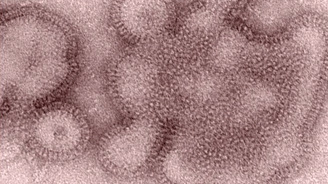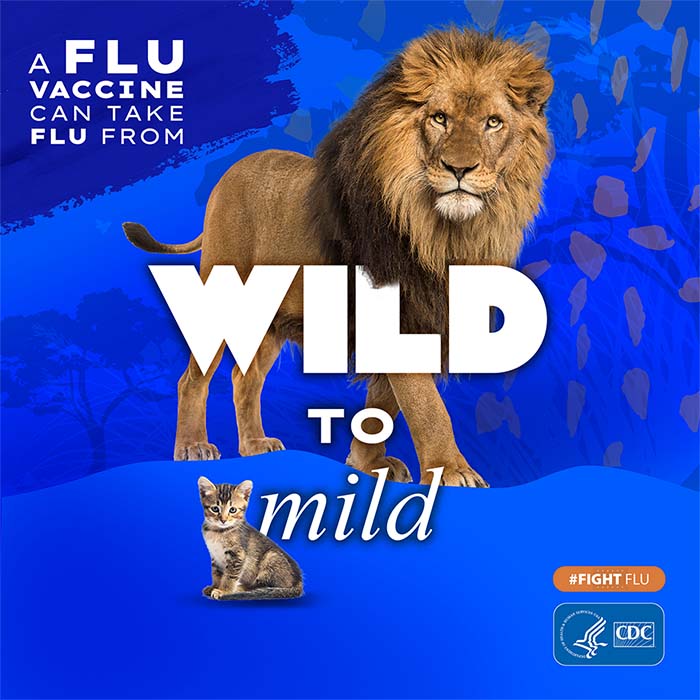CDC Reports Cases 18-29 of H3N2v Virus Infection; Continues to Recommend Interim Precautions When Interacting with Pigs
The information contained in this web update reflects the situation at the time of posting. It may not reflect the current situation. Please see Influenza A (H3N2) Variant Virus Outbreaks for the most recent information related to H3N2v.
August 3, 2012 –This week CDC reports 12 additional human infections with influenza A (H3N2) variant* virus in 3 states: Hawaii (1 case), Ohio (10 cases) and Indiana (1 case). The H3N2v virus contains the M gene from the human influenza A(H1N1)pdm09 (2009 H1N1) virus, as have the previous 17 cases detected since July 2011. All of this week’s reported cases occurred in people who had direct or indirect contact with swine prior to their illness.The 10 cases in Ohio were associated with attendance at a fair where reportedly ill swine were present. The H3N2v case reported by Indiana also occurred in a person who attended a fair where swine were present. CDC continues to recommend preventive actions people can take to make their fair experience a safe and healthy one.

The number of cases of infection with H3N2v viruses with the M gene from the 2009 H1N1 virus detected in the United States since July 2011 now totals 29 [Hawaii (1), Indiana (7), Iowa (3), Ohio (10), Maine (2), Pennsylvania (3), Utah (1), and West Virginia (2)]. Twenty-three of these cases reported swine contact prior to illness onset. Among those 29 cases, 19 cases were associated with fairs where swine were present. Most human illness with H3N2v virus infection has resulted in signs and symptoms of influenza (fever, cough, runny nose, sore throat, muscle aches); 3 hospitalizations have occurred. All of the people hospitalized had high risk conditions. (See “people who are at greater risk of serious influenza-related complications” below.) All H3N2v virus cases have recovered fully.
According to USDA, swine influenza surveillance, this swine H3N2 virus with the pandemic M gene has been detected in swine in a number of U.S. states. This virus may be circulating widely in U.S. swine at this time. It should be noted, however, that influenza viruses have not been shown to be transmissible to people through eating properly handled and prepared pork (pig meat) or other products derived from pigs.
It is possible that acquisition of the M gene from the 2009 H1N1 virus may allow H3N2v viruses to be more transmissible from pigs to people and from person-to-person.
Late summer is typically fair season across the United States, and fairs are a setting that can provide many opportunities for exposures to occur between pigs and people. CDC continues to advise people to take recommended precautions when interacting with pigs or their environments, including frequent hand washing and avoiding contact with pigs that appear ill. The National Association of State Public Health Veterinarians has developed the “Compendium of Measures to Prevent Disease Associated with Animals in Public Settings, 2011” to provide some preventive actions that are applicable to people raising swine, showing swine at fairs, or attending fairs.
This includes:
- Wash your hands frequently with soap and running water before and after exposure to animals.
- Never eat, drink or put things in your mouth while in animal areas and don’t take food or drink into animal areas.
- Young children, pregnant women, people 65 and older and people with weakened immune systems should be extra careful around animals.
- If you have animals – including swine – watch them for signs of illness and call a veterinarian if you suspect they might be sick.
- Avoid close contact with animals that look or act ill, when possible.
- Avoid contact with pigs if you are experiencing flu-like symptoms.
- If you must come in contact with pigs while you are sick, or if you must come in contact with pigs known or suspected to be infected, or their environment, you should use appropriate protective measures (for example, wear protective clothing, gloves, masks that cover your mouth and nose, and other personal protective equipment) and practice good respiratory and hand hygiene.**
Additionally, in response to recent human cases of H3N2v virus infection, CDC would like to convey the following information:
- Children younger than 5 years, people 65 years and older, pregnant women, and people with certain chronic medical conditions (like asthma, diabetes, heart disease, weakened immune systems, and neurological or neurodevelopmental conditions) are at high risk from serious complications if they get influenza. These people should consider avoiding exposure to pigs and swine barns this summer, especially if sick pigs have been identified.
- Studies conducted by CDC have indicated that children younger than 10 years old would have little to no immunity against H3N2v virus, whereas adults may have some cross-protective immunity. Most cases of H3N2v have occurred in children at this time.
- There are two FDA–approved drugs that are expected to be effective in treating illness associated with H3N2v virus infection. The antiviral drugs oseltamivir (Tamiflu) and zanamivir (Relenza) – which are used to treat infection with human seasonal influenza viruses –are also expected to be effective in treating H3N2v virus. Antiviral treatment is most effective when started as soon as possible after illness onset. (For more information about influenza antiviral medications, please see What You Should Know About Flu Antiviral Drugs.)
- Signs and symptoms of H3N2v virus infection cannot be differentiated from those caused by other respiratory infections, including seasonal influenza virus infection.
- Rapid influenza diagnostic tests may not detect H3N2v virus in human respiratory specimens (false negative results). If H3N2v virus infection is suspected because of recent exposure to pigs or to an ill person who had contact with pigs, testing of respiratory specimens should be done at a state health department.
- Influenza viruses have not been shown to be transmissible to people through eating properly handled and prepared pork (pig meat) or other products derived from pigs. For more information about the proper handling and preparation of pork, visit the USDA website fact sheet Fresh Pork from Farm to Table
Background
Influenza is a contagious respiratory illness caused by infection with influenza viruses. Human influenza viruses infect people and swine influenza A viruses infect pigs. Occasionally, influenza viruses can spread between people and pigs. While this isn’t common, it can happen. When a swine influenza A virus infects a person, these viruses are called “variant viruses.”
While swine influenza A viruses seldom infect humans, such infections can occur. Human infections with swine viruses are thought to occur in the same way that seasonal influenza viruses spread among people. Pigs that are infected shed influenza virus – possibly in coughs or sneezes – and people who are nearby can breathe the virus in. Infection also may occur by a person touching a surface or object that has virus on it and then touching their own mouth or nose.”
Signs of swine flu in pigs can include fever, depression, coughing (barking), discharge from the nose or eyes, sneezing, breathing difficulties, eye redness or inflammation, and going off feed. Some pigs infected with influenza viruses, however, may have no symptoms at all.
More Information
- More information about the case in Hawaii is available in “An influenza A (H3N2) variant virus, known as H3N2v virus, has been confirmed in a Maui adult resident. An investigation into the source of this person’s illness is currently ongoing“.
- More information about the situation in Ohio is available in a press release from the Ohio Department of Health: “Health Officials Confirm Flu Virus Strain from Butler County Fair“.
- More information about the situation in Indiana is available in “Health Officials Continue to Investigate Flu Illness“.
- More information on swine influenza can be found in What People Who Raise Pigs Need To Know About Influenza (Flu) .
- Additional information and materials, including educational posters [389 KB, 1 page] that can be displayed around animal exhibits, also are available in Compendium of Measures to Prevent Disease Associated with Animals in Public Settings, 2011.
- More information for people who are at greater risk for influenza complications is available at on the CDC website at People at High Risk of Developing Flu–Related Complications.
* A “variant” designation is applied when a virus that normally circulates in swine is found in humans.
** These recommendations are taken from Compendium of Measures to Prevent Disease Associated with Animals in Public Settings, 2011 and What People Who Raise Pigs Need To Know About Influenza (Flu).
